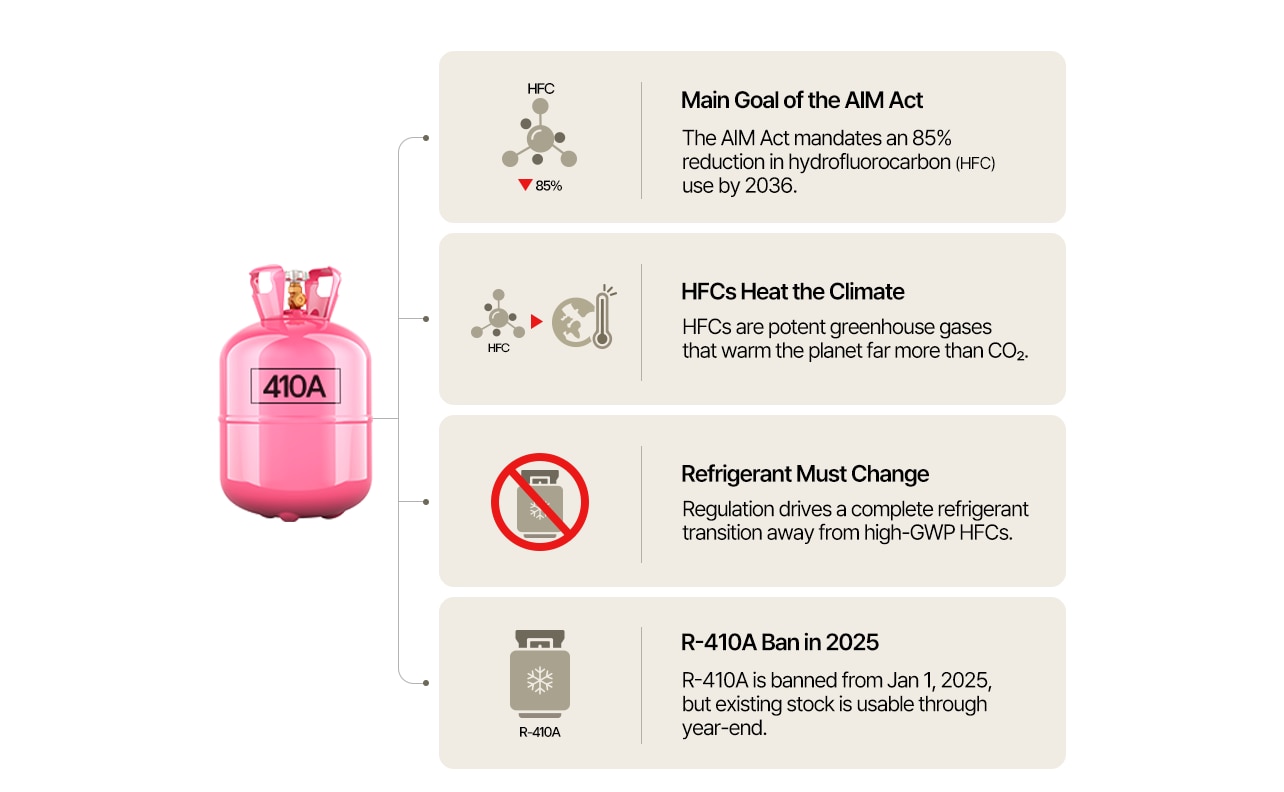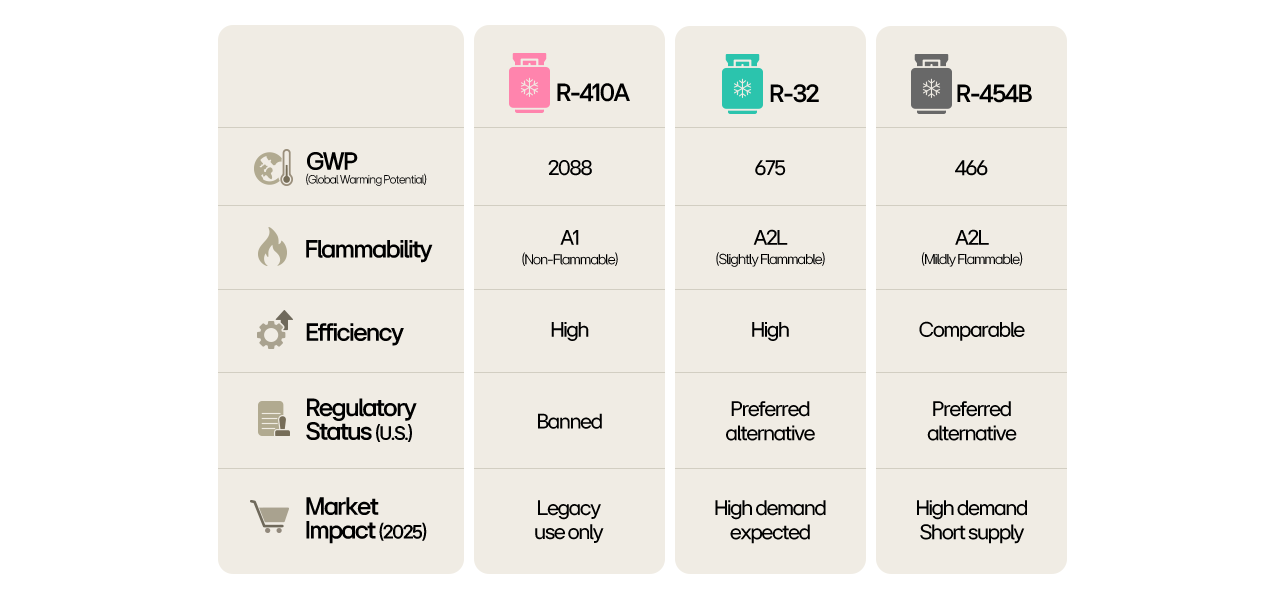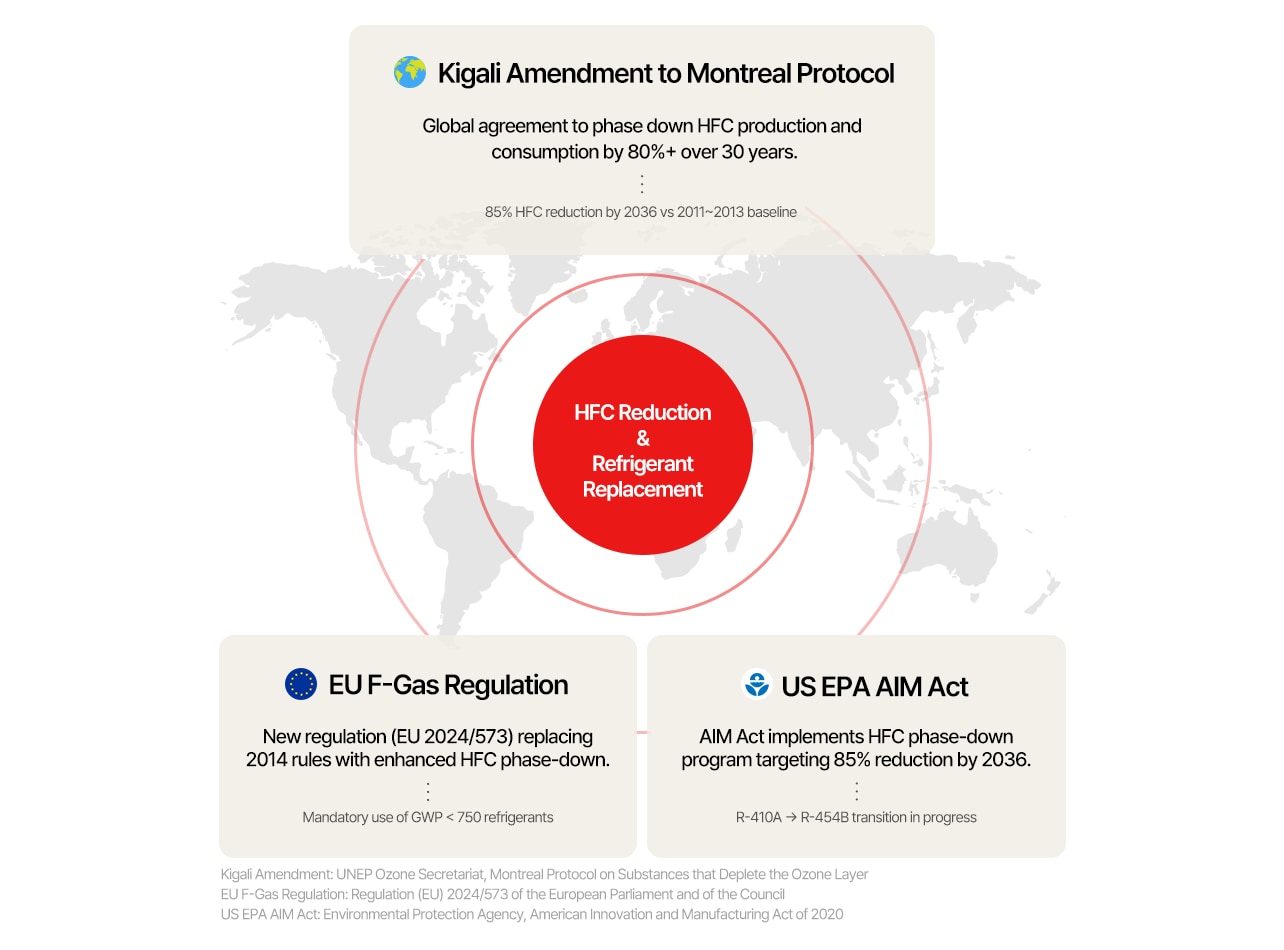We use cookies, including cookies from third parties, to enhance your user experience and the effectiveness of our marketing activities. These cookies are performance, analytics and advertising cookies, please see our Privacy and Cookie policy for further information. If you agree to all of our cookies select “Accept all” or select “Cookie Settings” to see which cookies we use and choose which ones you would like to accept.
In 2025, the U.S. HVAC industry is transforming due to new environmental regulations. R-410A, a widely used refrigerant, is now banned in new residential and light commercial systems as of January 1, 2025. 1) Federal regulations are driving a gradual phase-down of hydrofluorocarbon (HFC) refrigerants over the coming years. R-454B has become the leading choice for its lower environmental impact and effective cooling. Meanwhile, alternative refrigerants such as R-32 are also gaining traction.
This blog explores the rise of R-454B and the key insights HVAC professionals need, alongside the increasing relevance of R-32 in the transition to low-GWP refrigerants.
1) https://www.achrnews.com/articles/164518-r-454b-shortage-creates-challenges-for-distributors




